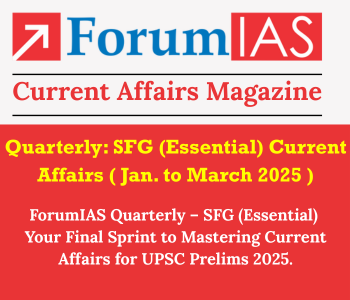We are posting Today’s 7 pm editorial Summary
About 7 pm Editorial Summary – This initiative provides an in-depth analysis of the important news editorial of the day. Students don’t need to look anywhere more for their daily news analysis. We take the most important editorial of the day and provide its comprehensive summary.
For old Archives of 7 pm editorial Summary, Click on “Archives”
Despite the Ujjwala Yojana, Why Does Solid Fuel Use Persist in North India?
What has happened? Pradhan Mantri Ujjwala Yojana was launched in 2016, which aims to promote clean cooking fuel in rural India. This led to reaching of LPG connections to 80 million households by September 2019. Still vast majority of rural population in North India is using solid fuel instead of LPG.
A major source of air pollution exposure in rural India is the use of solid fuels, such as dung cakes and wood, for cooking and heating. In the National Family Health Survey (NFHS) 2015–16, 75% of rural Indian households reported using mainly solid fuels for cooking. In May 2016, the Indian government launched the Pradhan Mantri Ujjwala Yojana, which aims to promote the use of clean cooking fuel in rural India.
Although the Ujjwala Yojana has substantially increased access to LPG, many households that have LPG continue to use solid fuels. This brings us to the question of finding the reasons for the same. Therefore, in this article we will discuss the following:
- What is Pradhan Mantri Ujjwala Yojana?
- What is rationale behind Ujjwala Yojana?
- Where is Ujjwala Yojana lacking?
- Why use of solid fuel still persistent in rural areas?
- Conclusion
What is Pradhan Mantri Ujjwala Yojana?
- Pradhan Mantri Ujjwala Yojana was launched by Hon’ble Prime Minister Shri Narendra Modi on May 1st, 2016in Ballia, Uttar Pradesh.
- It is a scheme of the Ministry of Petroleum & Natural Gasthat will provide 5 Cr LPG connections to BPL families with a support of Rs.1600 per connection by March 2019. The target was later raised to 8 crore connections by March 2020.
- The Scheme provides a financial support of Rs 1600 for each LPG connection to the BPL households, interest free loan to purchase stove and refill by Oil Marketing Companies. The administrative cost of Rs. 1600 per connection, which includes a cylinder, pressure regulator, booklet, safety hose, etc., would be borne by the Government.
- Ensuring women’s empowerment, especially in rural India, the connections will be issued in the name of women of the households.
- Identification of the BPL families will be done through Socio Economic Caste Census
- Launch of this scheme will also provide a great boost to the ‘Make in India’ campaign as all the manufacturers of cylinders, gas stoves, regulators, and gas hose are domestic.
What is rationale behind Ujjwala Yojana?
- India is home to more than 24 Crore households out of which about 10 Crore households are still deprived of LPG as cooking fuel and have to rely on firewood, coal, dung – cakes etc. as primary source of cooking.
- The smoke from burning such fuels causes alarming household pollution and adversely affects the health of Women & children causing several respiratory diseases/ disorders.
- As per a WHO report, smoke inhaled by women from unclean fuel is equivalent to burning 400 cigarettes in an hour.
- According to WHO estimates about 5 lakh deaths in India alone due to unclean cooking fuels. Most of these premature deaths were due to non-communicable diseases such as heart disease, stroke, chronic obstructive pulmonary disease and lung cancer.
- Indoor air pollution is also responsible for a significant number of acute respiratory illnesses in young children.
Where is Ujjwala Yojana lacking?
- As per a survey conducted among the rural households in the sates of Bihar, Madhya Pradesh, Rajasthan and Uttar Pradesh (42% of India’s rural population lives in these 4 states), 98% of households with LPG also had chulha, already indicating continued solid fuel use among LPG owners.
- Some food items were more commonly made on chulha, while others were more often cooked on LPG. For example, among households that made chai (tea), most made it on LPG. In contrast, among those who made roti (chapatti), most made them on chulha.
- Only 27% of households from the above 4 states are exclusively using LPG to cook all the items. About 37% are making some items on LPG and some on chulha, and 36% made everything on chulha.
- Conditional on having both types of fuel sources, rich households are less likely to exclusively use the chulha, and more likely to exclusively use LPG, than poor households. However, notably, less than 37% of the richest households exclusively use LPG conditional on having it. Interestingly, rich households are more likely to mix fuel sources than poor households. About 47% of the richest LPG-owning households mixed fuel sources (both chulha and LPG).
- Around 35% of all LPG-owning households and 60% of households that received LPG through Ujjwala, report not receiving the subsidy at all from the government.
Why use of solid fuel still persistent in rural areas?
- In the 4 states (Bihar, MP, Rajasthan and UP) where survey was conducted, LPG ownership increased from 32% households (in 2014) to 76% households (in 2018). But still several of these households continue to use solid fuels instead of LPG for cooking. The reasons could be listed as:
- Household Wealth: Refilling a cylinder costs almost half the average monthly per capita expenditure in rural India (National Sample Survey Office 2013). It is possible that poor households do not refill their cylinders often because of the expense.
- Easy Availability of Other Fuel Sources: Solid fuels are easily available and free of cost. Households that own cows or buffaloes have access to dung to make dung cakes, and those that own land can use its agricultural waste or cut branches from the trees growing on it. Public land and forests are also a source of free wood.
- Issue of subsidy:
- Most households were not aware that they would not receive subsidies in their account until the “loan component” of the Ujjwala scheme had been adjusted against their subsidies.
- Many households were not aware of the bank account their subsidy was being transferred to.
- The relative cost of different fuel sources is likely a reason for some households to continue to use solid fuels despite having LPG.
- Gender Inequality in Household Tasks:
- At all ages, women are more likely to be the main cooks, and to help in cooking, than men. Women between the ages of 25 and 40 are the most likely to be the main cooks, and girls and older women are the most likely to help in cooking.
- A large fraction of the work of cooking with solid fuels is performed by women. Since North Indian cultural norms discourage women from working for pay outside of the home, there is a low opportunity cost of time spent making and collecting solid fuels and cooking on the chulha.
- Women also have low status and are typically not economic decision-makers in the household. Hence, effort and time put in by a woman in household works are not valued.
- Beliefs and Attitudes:
- Most respondents believe that, compared to the chulha, gas is easier to cook on and is healthier for the person cooking.
- But the vast majority of respondents also believe that food cooked on chulha is tastier, and is better for the health of the person eating.
- Many women knowingly sacrifice their own health believing that their choices are promoting the health of their children, husbands, and other family members.
- Using chulha is not only bad for the woman who cooks but also for the family members as they cannot escape the ambient air pollution caused by solid fuel use.
Conclusion
Despite the expansion in LPG ownership brought about by Ujjwala, most households still regularly cook with solid fuels. Therefore the need is to design interventions to discourage the use of solid fuel. Avenues worth exploring are greater subsidies for cylinder refills, informational campaigns that educate about the harms of air pollution exposure, and behavioral campaigns that change attitudes. Advertisements currently promote Ujjwala by emphasizing benefits to women. Although LPG use does benefit women, these advertisements reinforce women’s roles as cooks. Instead, promoting men’s involvement in household tasks such as cooking may help accelerate the use of LPG while promoting gender equality. The monitoring the progress of Ujjwala requires monitoring cylinder refills. Disaggregated and regular data on refills are important to release because it helps directly measure use.
Thus, to prevent exposure to harmful air pollution caused by the use of solid fuels for cooking, there is need to promote exclusive use of LPG.
Source: https://www.epw.in/engage/article/despite-ujjwala-yojana-why-does-solid-fuel-use-persist-north-india
Discover more from Free UPSC IAS Preparation Syllabus and Materials For Aspirants
Subscribe to get the latest posts sent to your email.







